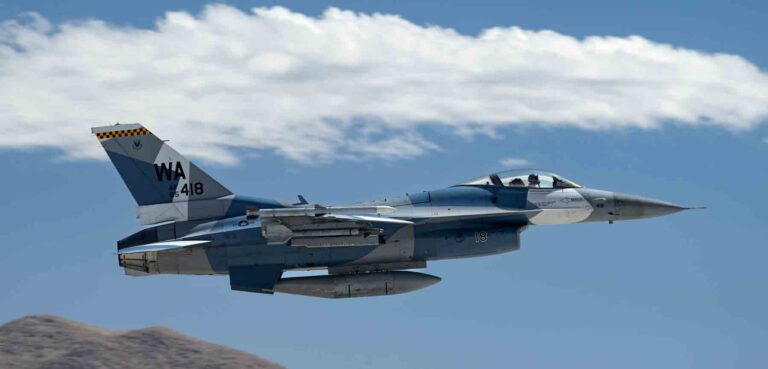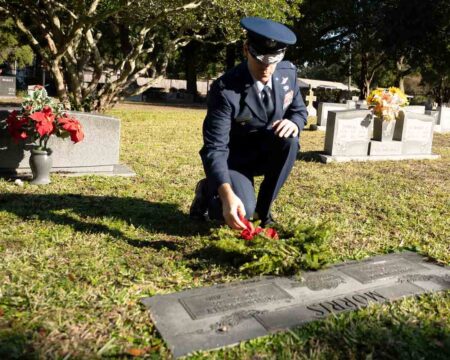EGLIN AIR FORCE BASE, Fla. — The 53rd Wing partnered with the 57th Maintenance Group, U.S. Navy, Marine Corps, Nevada Air National Guard, U.S. Air Force Reserves, and others to conduct Exercise Black Flag 22-2, in September 2022.
Nested under the Air Force’s test flag enterprise, Black Flag’s main objective is to integrate and test the suitability of capabilities and tactics in multi-domain, multi-service, operationally relevant scenarios, according to an announcement by the 53rd Wing.
This Black Flag iteration included the newly developed Maintenance Operational Test Center of Excellence (MxOT). The MxOT concept, driven by a competitively selected maintenance team, focuses on tactics, techniques, and procedures (TTPs) development, integration of innovating technologies and concepts, and standardization of the Agile Combat Employment (ACE) playbook, specifically in the aircraft logistics and sustainment space.
“Traditionally in Operational Test we’ve focused on the lethality and survivability of our weapons systems,” said Senior Master Sergeant Christopher Sipes, 59th Test and Evaluation Squadron MxOT superintendent.
“MxOT focuses on the reliability and maintainability of those weapons systems and the creation of a standardization that’s universal in a joint environment.”
Black Flag involvement was one of the first steps towards developing MxOT requirements and quantifying potential risks involved in Joint Agile Combat Employment. The MxOT team will use the results of the exercise to build models for warfighter training and combat sortie generation in contested environments.
Building off the work done in Black Flag 22-1, the 422d Test and Evaluation Squadron Command and Control (C2) Division scaled their Tactical C2 element from one to three interconnected nodes.
According to the announcement, the C2 team conducted two simultaneous joint airlift missions and placed two Tactical C2 units on the Nevada Test and Training Range (NTTR), with one unit remaining on Nellis. All three nodes were able to share information with each other with two nodes fully mobile throughout the mission.
The C2 team was able to connect with airborne platforms and bring in radar feeds from both the NTTR and the 109th Air Control Squadron, Utah Air National Guard.
“Black Flag provided an operationally-relevant environment with the freedom to experiment and iterate on concepts that break a 30-year-old paradigm and provide a rapid, tangible warfighter solution to a severe blind spot in the future of our warfighting capacity,” said Maj. Paden Allen, 422d TES C2 division commander.
“Our work during this exercise demonstrated that future Tactical C2 platforms can and must be able to operate on the move against a peer threat, as well as integrate cohesively despite being disaggregated.”
Another objective of Black Flag 22-2 involved continued tactics development for Eagle Passive Active Warning Survivability System (EPAWSS) integration with the entire U.S. Air Force inventory.
This Black Flag included EPAWSS-equipped F-15E Strike Eagle and F-15EX Eagle II aircraft from Eglin Air Force Base, allowing for expanded formations. These fighters worked alongside 5th-generation platforms to quantify how EPAWSS can alter the environment and enhance survivability.
EPAWSS is still in developmental test, with Initial Operational Test and Evaluation (IOT&E) scheduled to begin in January 2023.
By 1st Lt Lindsey Heflin, 53rd Wing








